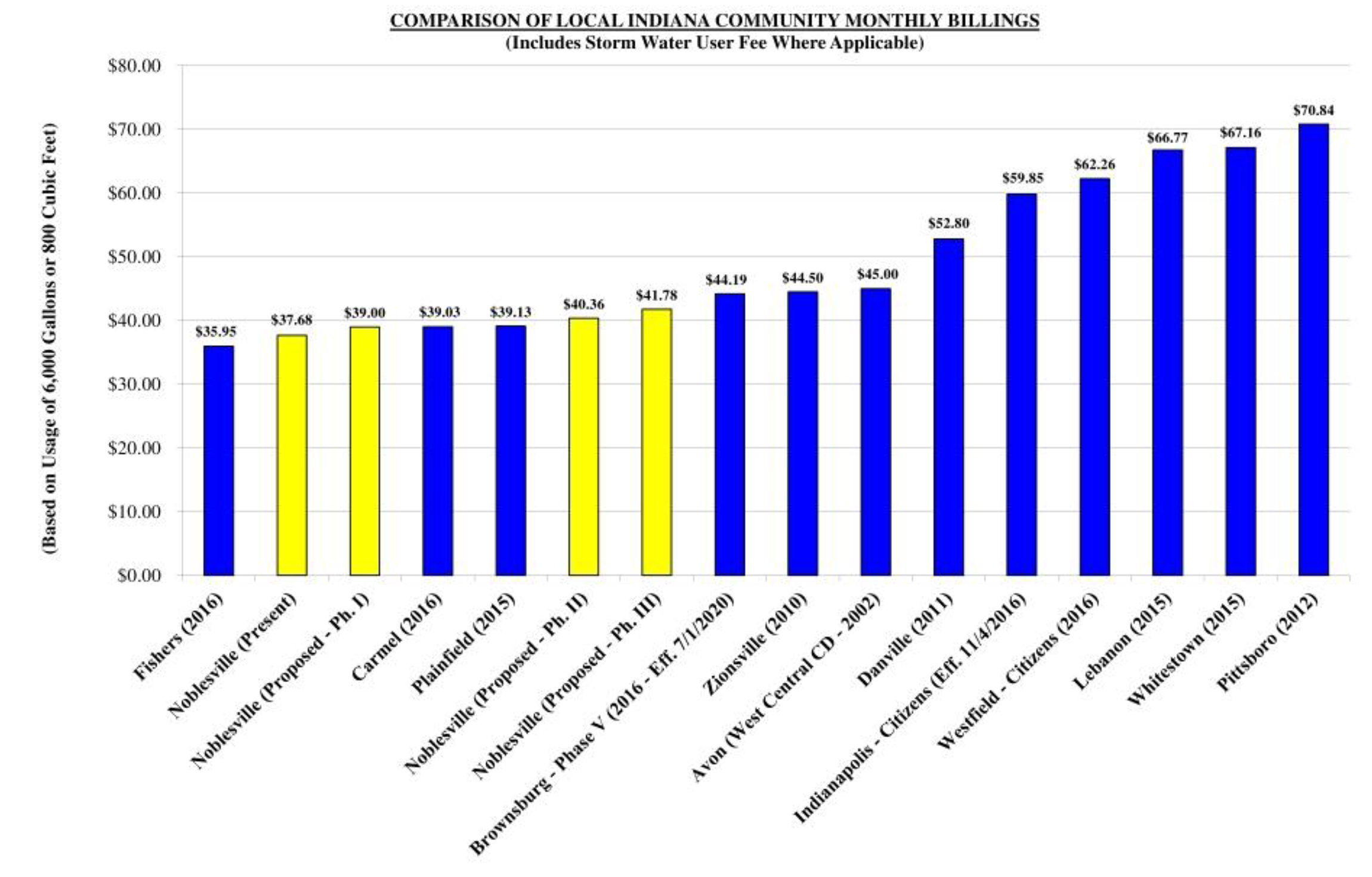
Two upcoming projects required by the federal government have led the City of Noblesville to propose a minor rate increase in the sewer rates within city limits. The two projects, at a total cost of $11.73 million, represent unfunded mandates ordered by the Environmental Protection Agency and the Indiana Department of Environmental Management.
Noblesville Utilities has requested a three-year rate increase of 3.5 percent on all sewer fees. The new rate was presented to the Noblesville Common Council and will be voted on at its May 23 meeting following a period for public comment.
“It’s unfortunate that the EPA and IDEM have left the city with no choice but to bear the responsibility for the construction and funding of these projects,” Noblesville Mayor John Ditslear said. “While no one likes to see a rate increase, in the long run, these projects will still be beneficial to our city, and are necessary to protect our waterways.”
Noblesville charges a flat rate for residents, which is currently $37.68 per month. If approved, the rates will change on July 1 of 2017, 2018 and 2019. Proposed monthly residential fee changes include:
- July 2017 - $39.00, increase of $1.32/month ($15.84/year)
- July 2018 - $40.36, increase of $1.36/month ($16.32/year)
- July 2019 - $41.78, increase of $1.41/month ($16.92/year)
“Since 2007, over a decade span, the sewer fee for Noblesville residents has only risen a total of $5.80 per month,” said Noblesville Utilities Director Ray Thompson. “We have and will continue to keep our costs as low as possible while keeping the taxpayer in mind when planning for such projects. Even with this three-year increase, Noblesville’s rates remain among the lowest in our area.”
The two federal unfunded mandates involve the Long Term Control Plan Phase IV (estimated cost of $3,590,800) and phosphorus removal and air supply system replacement ($8,138,800).
Long Term Control Plan Phase IV
The city began its 15-year Long Term Control Plan in 2007 with plans to complete the work in five phases. Phase IV, expected to begin in June, will remove storm water from combination sewers in Old Town. Currently, the existing storm water mixes with sanitary sewage and flows to the treatment plant through combined sewers. Once completed, storm water will flow into a newly installed storm sewer system and out to the receiving streams.
“The project area is the northern boundary of the CSO basin – north of Conner Street, east of White River, west of 18th Street and south of Roosevelt Drive,” Thompson said. “This will improve the drainage along those streets and remove unwanted water from the treatment plant.”
Phosphorus Removal
For the past year, the city performed a Phosphorus Removal pilot in preparation for this project, which will remove phosphorus from the wastewater at the treatment plant. Phosphorus is a nutrient that passes through the typical treatment process and now must be targeted and removed. When phosphorus is found in the waterways and streams, it creates excessive algae growth, which then causes algae blooms and robs the water of oxygen – killing fish and creating odorous waters. The Phosphorus Removal Project will begin construction in late summer.
In addition to the Phosphorus Removal project, the utilities treatment plant will make updates that will make the air supply system more efficient, and thus, cost effective.
“The city is expecting to gain $100,000 to $140,000 a year through the upgrade to the equipment, which means the new air supply system can pay for itself in less than 10 years,” Thompson said.
